Fur coats hot with millennials, if used or fake
"I would never buy new because of my own moral conscience, but I can absolutely buy consignment pieces that are vintage"
Michelle Luksh became part of the sisterhood of the traveling fur coat when a female colleague her grandmother's age gifted her a white fox jacket a few years ago. Luksh, 32, who lives in Philadelphia, prefers to buy fur on the vintage and resale markets for ethical reasons, and when her former co-worker offered the fox coat that has "Karen W. Straub" sewn in to the jacket's lining for free, she slipped right into it.
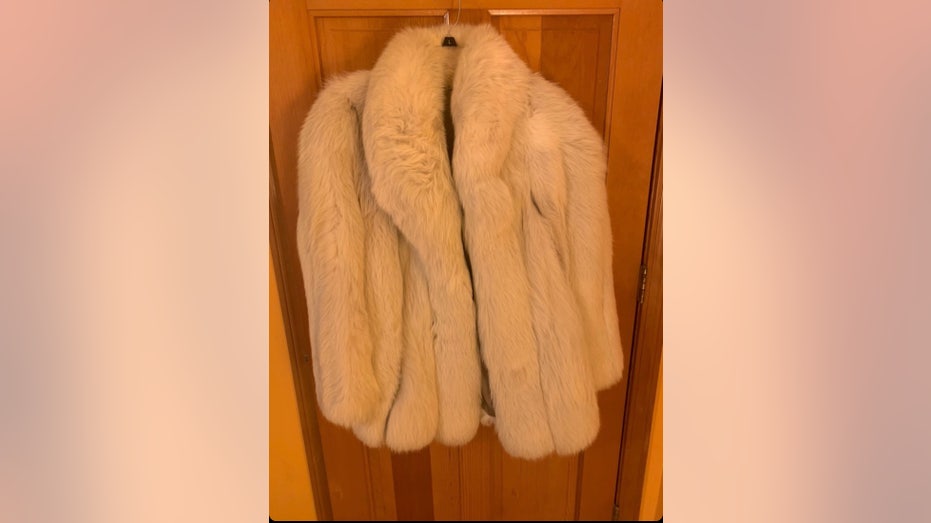
The white fur coat Luksh's co-worker gifted her. (Courtesy of Michelle Luksh).

Luksh's hand-me-down coat has her former colleague's name sewn in to the lining. (Courtesy of Michelle Luksh).
"I would never buy new because of my own moral conscience, but I can absolutely buy consignment pieces that are vintage," Luksh said, adding she found another black mink fur shawl at a consignment shop in Brooklyn, New York, a few years ago to add to her collection.
"Honestly, there is nothing like a fur coat in the dead of winter when you want to stay warm and look like a rich b---h," she said.
"Honestly, there is nothing like a fur coat in the dead of winter when you want to stay warm, and look like a rich b--h."
Tennessee native Carrie Morris, 28, spent $250 on a brown mink coat she bought used on eBay as a rite of passage of sorts before she moved to New York City in her early 20s.
"I felt like Carrie Bradshaw," she said. "But not contributing to the fur trade because it's vintage."
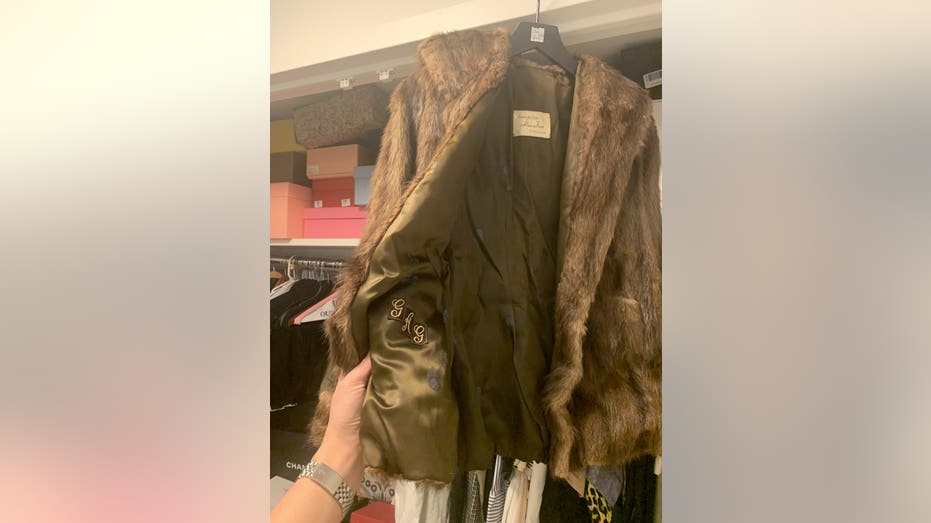
Carrie Morris bought a vintage mink coat on eBay before she moved to New York for $250. (Courtesy of Carrie Morris)
Morris and Luksh, like many people their age, are upcycling fur, buying it on the resale market or seeking out faux alternatives this winter as designers move toward creating sustainable options. Prada, Gucci, Armani and Chanel have said they’d stop using fur in their production lines. And Macy’s and Bloomingdales announced in October they would stop selling fur by the end of fiscal 2020, while luxury e-commerce retailers like Yoox Net-A-Porter Group and FarFetch have already banned the sale of it.
MACY'S, BLOOMINGDALES TO STOP SELLING FUR BY 2020, SWITCH TO FAUX FUR
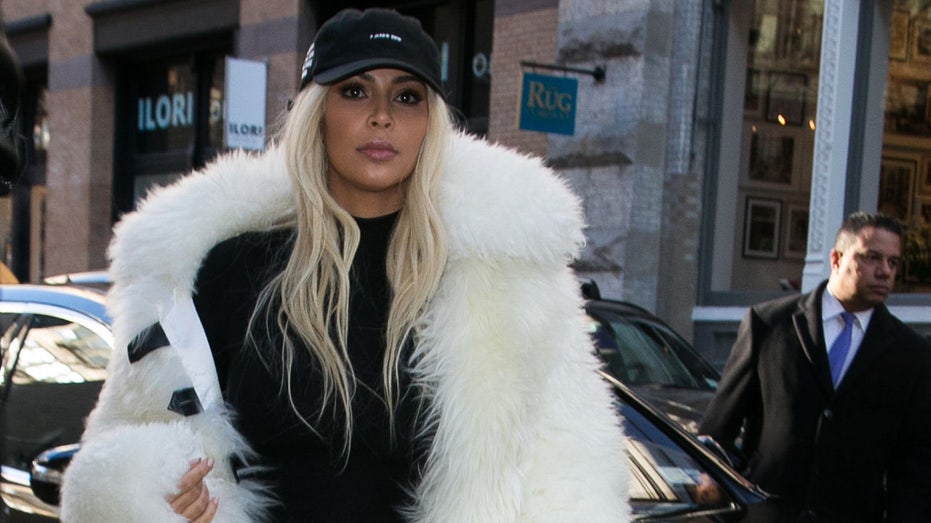
Kim Kardashian West (Marc Piasecki/GC Images)
The move comes as more cities and states work to ban the sale of fur clothing. A group of animal rights activists stormed the Oregon State Capital on Sunday to protest the sale of fur and the inhumane way animals are treated in its production. Minneapolis City Council proposed a ban on the sale and manufacturing of new animal fur products earlier this month for animal cruelty and environmental reasons, allowing second-hand retailers to sell used animal fur products. And California became the first U.S. state to ban the sale of newly manufactured fur products in a historic legislative move in October. The ban goes into effect in 2023 and also includes animal skins such as crocodile and alligator.
CALIFORNIA BANS FUR STATEWIDE, BUT THE MULTIBILLION-DOLLAR INDUSTRY WON'T BE EASY TO KILL
Amid the politics of it all, some wearing secondhand fur feel ashamed to admit it's the real thing. Jenna Gambino, 28, adores her mink coat, a gift passed down to her by her grandmother with a headband to match, but she said: “I tell everyone it’s faux."
Gambino, who considers herself passionate about animal rights, explained, “I feel like the hypocrite of the century loving fur. But it's recycled.”
She wears the coat for its warmth and style, she says, and mainly for its sentimental value as a family heirloom.
“My grandmother’s initials are stitched into the lining. It’s so versatile, warm and pretty," she said.
The fur-less fashion movement has been an outspoken one for decades. More than 100 million animals such as mink, foxes, rabbits and chinchillas die each year for fur production, and 85 percent of them are killed at factory farms, according to statistics from The Humane Society of the United States.
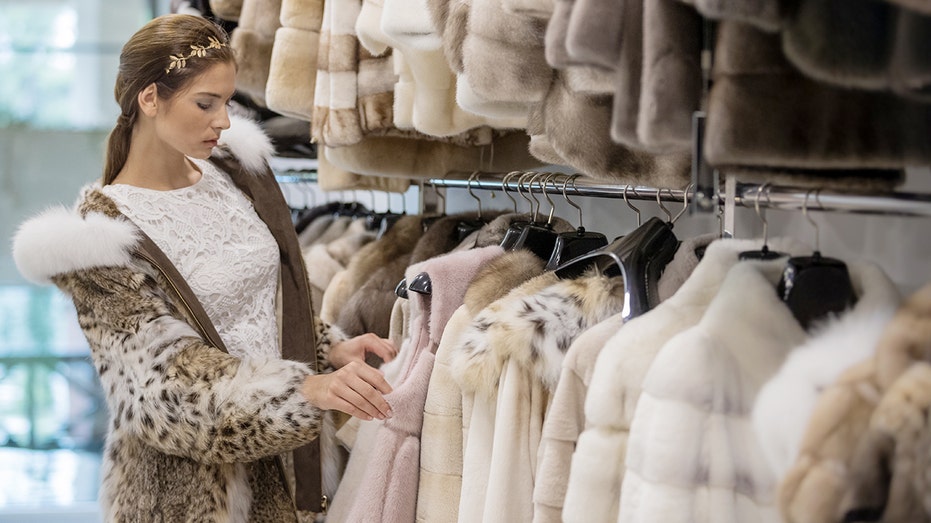
Animal protection laws have been put in place since the 1960s, and PETA rolled out anti-fur protests throughout the 1980s advocating against animal cruelty despite many fashion icons wearing the coats on runways and red carpets. Rihanna faced backlash a few years ago when she wore a calf-length fur coat to a Dior fashion show. As a result, tastemakers have taken action. InStyle became the first editorial publication to ban fur products from its glossy, and stars like Stella McCartney, Miley Cyrus and Kim Kardashian have also vowed to stop wearing and buying fur. Kardashian said last year she remade all of her favorite fur styles into faux fur instead.
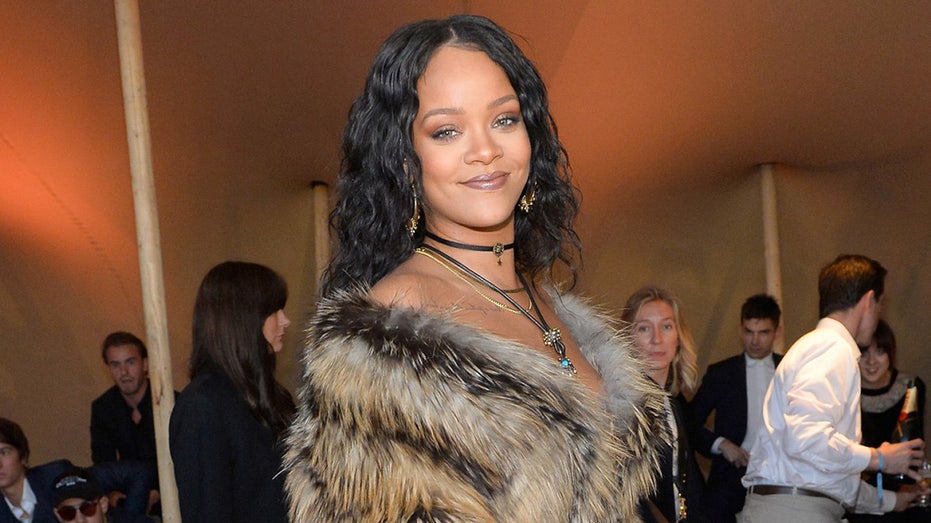
PETA spoke out against Rihanna's calf-length coat when she wore it on the red carpet to a Dior fashion show in 2017. (Getty Images)
"We're seeing faux fur products made of things like recycled plastic, and a lot of brands are specifically producing eco-friendly faux fur because it's better for the environment and gives designers more options," Ashley Byrne, an associate director for PETA, told FOX Business.
GET FOX BUSINESS ON THE GO BY CLICKING HERE
Take Kym Canter, the CEO of House of Fluff, a faux fur retailer, who started the business after she no longer felt comfortable wearing real fur. When she couldn't find an ethically made alternative she loved, she started her own company. The brand uses faux fur textiles developed in Europe, and it recycles all excess fabric into other designs.
"I saw this as my chance to make a real difference," Canter writes on her website. "I sold all my 26 of my own fur coats and vowed to create a brand that would not harm animals or the planet."
| Ticker | Security | Last | Change | Change % |
|---|---|---|---|---|
| HNNMY | H&M HENNES & MAURITZ AB | 3.06 | +0.02 | +0.66% |
| M | MACY'S INC. | 18.53 | -0.51 | -2.68% |
| GUCG | n.a. | n.a. | n.a. | n.a. |
| PRDSY | PRADA SPA | 14.78 | -0.43 | -2.83% |
The industry shift is a result of consumers wanting to invest in sustainable fashion brands. Indeed, a study from Neilsen shows that 73 percent of millennials said they'd be willing to spend more money on a product if it comes from a socially conscious and sustainable brand, and 81 percent expect brands to be transparent in their advertising. And global brands are investing in eco-friendly fashion technology. Eileen Fisher of her namesake clothing line is an investor and partner in Alante Capital, which invests in sustainable fashion technology, and fast-fashion retailer H&M is investing in textile recycling technologies to reduce waste and dependence on cotton materials.
Still, fur seems to continue to be in high demand with sales more than doubling in the U.S. between 2009 and 2018, growing from $219.8 million to $531 million, according to data from Euromonitor International, cited by The Pew Charitable Trusts.
And Michael Tommasiello, 33, is shamelessly buying it second-hand. He bought a Yves Salomon fox and rabbit fur coat used on Grailed, a luxury consignment retailer for menswear.
"I'm 100 percent a fur supporter, and it's better to buy used. It's more ethical," he said.